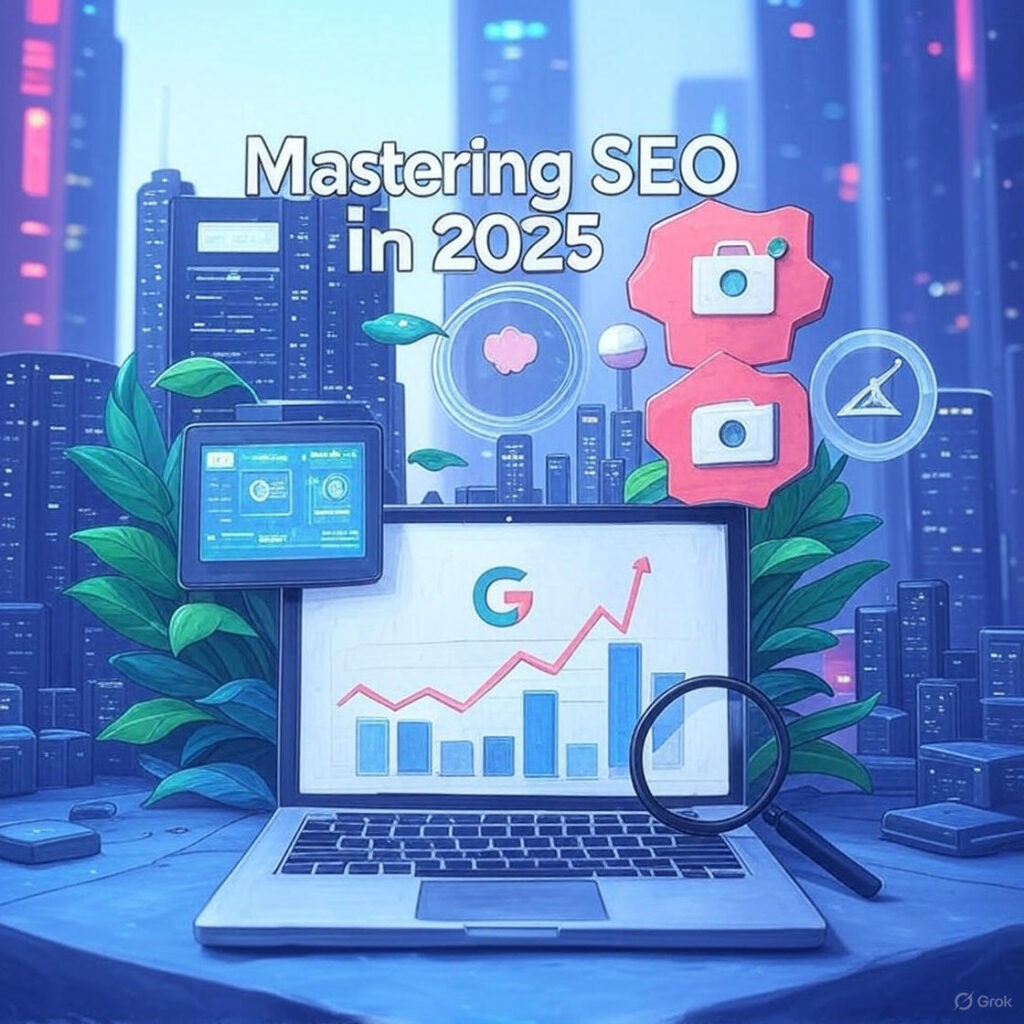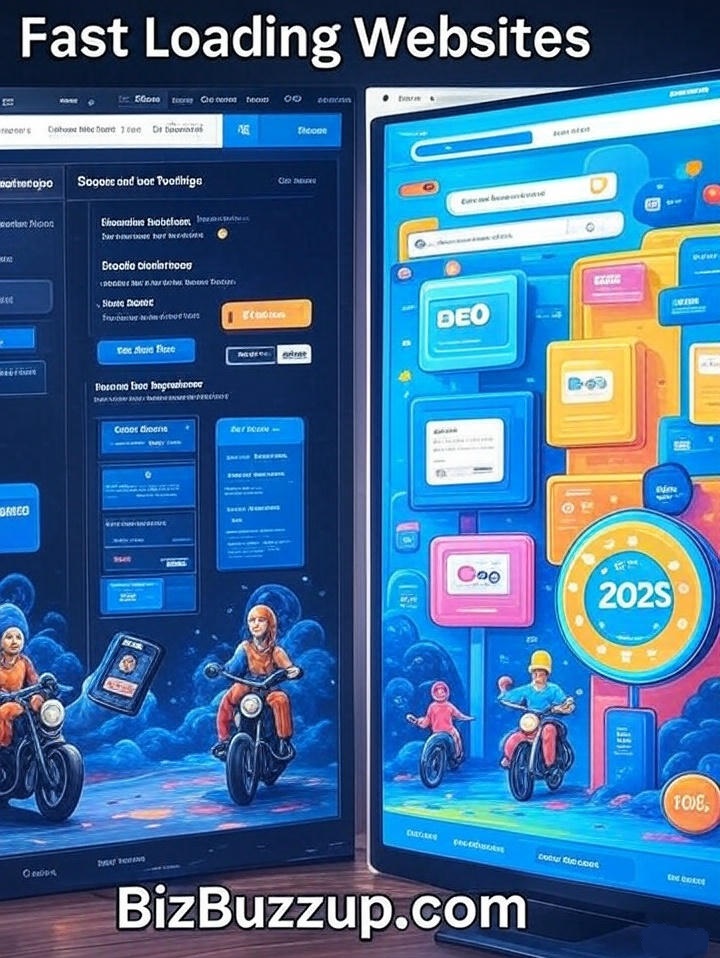
Understanding SEO Fundamentals
In the ever-evolving digital landscape, Search Engine Optimization (SEO) has become a cornerstone of successful online marketing. Whether you’re a local business owner or a global brand, optimizing your website for search engines like Google, Bing, and Yahoo is critical for driving organic traffic and enhancing your visibility on the web. SEO is more than just ranking—it’s about creating a seamless, valuable experience for users and search engines alike.
1. What is SEO and Why It Matters
SEO is the process of improving a website’s structure, content, and authority to rank higher in search engine results pages (SERPs). A well-optimized site not only attracts more visitors but also ensures that those visitors are genuinely interested in what you offer. For businesses aiming to build an online presence, SEO is essential for long-term growth and competitiveness.
2. Key Pillars of SEO Strategy
A. On-Page SEO
On-page SEO focuses on optimizing elements directly within your website. This includes:
-
Keyword Integration: Naturally incorporating relevant keywords throughout content, headings, and metadata.
-
Meta Tags: Writing compelling and keyword-rich title tags and meta descriptions.
-
Content Structure: Using clear header tags (H1, H2, H3) to organize information logically.
-
User Experience: Ensuring content is engaging, readable, and matches user intent.
Effective on-page SEO helps search engines understand your content while delivering value to users.
B. Off-Page SEO
Off-page SEO enhances your website’s credibility through actions taken outside of your website:
-
Backlinks: Earning links from authoritative and relevant websites signals trust to search engines.
-
Social Media Signals: Active social media engagement can increase visibility and drive traffic.
-
Reputation Management: Encouraging positive reviews and managing your online reputation boosts trust and local search presence.
These factors contribute to building your domain authority and improving your ranking potential.
C. Technical SEO
Technical SEO ensures that your website’s infrastructure supports search engine crawling and indexing. Important aspects include:
-
Website Speed: Optimizing load times to keep users engaged and reduce bounce rates.
-
Mobile Optimization: Ensuring your site functions seamlessly on all devices.
-
Secure Connection (HTTPS): Improving trust and meeting search engine expectations.
-
XML Sitemap & Robots.txt: Assisting search engines in indexing your site efficiently.
A technically sound website creates a solid foundation for all other SEO efforts.
3. Local SEO: Reaching Nearby Customers
For businesses that rely on local clientele, local SEO is particularly important. This includes optimizing your Google Business Profile, collecting local reviews, building citations, and ensuring NAP (Name, Address, Phone Number) consistency across the web. Local SEO helps your business appear in the coveted “local pack” on Google Maps and localized searches.
4. The Benefits of a Cohesive SEO Strategy
By combining on-page, off-page, and technical SEO with a focus on local optimization, businesses can:
-
Improve search visibility
-
Attract qualified traffic
-
Build credibility and trust
-
Enhance user engagement
-
Generate more leads and conversions
SEO is not a one-time task, but a continuous strategy that grows with your business.
Conducting Keyword Research
In the competitive world of digital marketing, keyword research stands as a foundational pillar of any successful SEO strategy. It not only informs content creation but also ensures that businesses attract the right audience, driving quality organic traffic to their websites. In 2025, mastering keyword research is more important than ever for increasing visibility, boosting rankings, and achieving measurable online growth.
1. The Importance of Keyword Research in SEO
Keyword research helps identify the terms and phrases that people use when searching for products, services, or information online. By targeting the right keywords, businesses can:
-
Increase organic search traffic
-
Connect with their ideal audience
-
Enhance content relevance
-
Improve conversions and ROI
Without this vital research, content may fail to reach the intended audience, no matter how well-written or optimized it appears.
2. Using Keyword Research Tools Effectively
A. Google Keyword Planner
One of the most trusted tools in the industry, Google Keyword Planner offers valuable insights into:
-
Search volume (how many people search for a keyword monthly)
-
Competition level (how hard it is to rank for a keyword)
-
Related keyword suggestions
Marketers can input their business niche or product and instantly receive data-driven keyword recommendations. This enables more strategic planning, especially when balancing high-volume keywords with achievable ranking opportunities.
B. Other Tools to Consider
In addition to Google Keyword Planner, tools like SEMrush, Ahrefs, and Ubersuggest provide advanced analytics and competitive keyword data. These platforms can help you uncover long-tail keyword opportunities and track changes in keyword trends over time.
3. Competitor Analysis for Keyword Opportunities
Analyzing the keywords your competitors rank for can offer a roadmap to new SEO opportunities. This involves:
-
Identifying top-performing pages from competitors
-
Extracting their high-ranking keywords
-
Finding gaps where your website can create better or alternative content
This approach helps refine your own keyword strategy while understanding industry trends and customer search behavior.
4. Understanding Search Intent and Keyword Types
A. Keyword Difficulty vs. Search Volume
Choosing the right balance between keyword difficulty and search volume is key. While high-volume keywords seem attractive, they are often highly competitive. Instead, look for:
-
Low to medium difficulty terms that are easier to rank for
-
High intent keywords, especially for e-commerce or service pages
B. Long-Tail Keywords
Long-tail keywords are more specific, usually consisting of three or more words (e.g., “best running shoes for flat feet”). These offer:
-
Lower competition
-
Higher conversion rates
-
Better alignment with user intent
They are especially effective in reaching users who are closer to making a decision or purchase.
5. Aligning Keywords with Content Strategy
Once you’ve identified your target keywords, it’s essential to:
-
Map them to specific content types (e.g., blogs, landing pages, product pages)
-
Use them naturally within headings, paragraphs, meta titles, and URLs
-
Regularly update and optimize existing content based on new keyword opportunities
This ensures that your SEO strategy remains agile and continues to align with search trends and consumer behavior.
Optimizing Website Structure
A successful SEO strategy begins with more than just keywords—it starts with a strong, intuitive website structure. A well-organized website improves both user experience and search engine optimization, enabling visitors to navigate with ease and encouraging search engines to index content efficiently. In turn, this enhances visibility, engagement, and conversion rates.
1. Implementing Clear and Logical Navigation
Your site’s navigation acts as a roadmap for users and search engines alike. A structured menu, organized content categories, and the use of breadcrumb navigation help users understand where they are and how to find related information.
-
Benefits for users: Easier navigation leads to lower bounce rates and improved user satisfaction.
-
Benefits for SEO: Clean navigation paths enable search engines to crawl and index more pages, boosting your presence in search engine results pages (SERPs).
Best Practice Tip: Use a hierarchical structure where key categories are broken down into relevant subcategories.
2. Optimizing URL Structure for SEO and Usability
An often-overlooked component of SEO, URL structure can significantly impact search visibility. SEO-friendly URLs are:
-
Descriptive: Clearly reflect the content of the page.
-
Clean: Free of unnecessary numbers or parameters.
-
Keyword-rich: Include relevant terms to boost discoverability.
Example:
✅ www.example.com/seo-tips
❌ www.example.com/page?id=123
Pro Tip: Avoid using stop words (like “and”, “the”) in URLs and use hyphens (-) instead of underscores (_) for better readability and indexing.
3. Structuring Site Hierarchy for Indexing and Access
The site hierarchy determines how content is grouped and connected, directly affecting crawlability and user access. Follow the “three-click rule,” which suggests users should be able to reach any page within three clicks from the homepage.
-
Top-level pages: Should include key categories like services, blog, and contact.
-
Subpages: Contain more specific topics or products grouped under appropriate parent categories.
SEO Advantage: Search engines use your internal linking structure to determine the relative importance of each page, so a smart hierarchy helps distribute link equity efficiently.
4. Mobile Optimization and Responsive Design
With over half of all web traffic coming from mobile devices, mobile optimization is no longer optional—it’s essential. Responsive design ensures your website:
-
Adjusts seamlessly to different screen sizes
-
Loads quickly across devices
-
Delivers consistent content and layout
Why it matters:
Google uses mobile-first indexing, meaning your site’s mobile version is prioritized for ranking. A poor mobile experience can lead to lower rankings, higher bounce rates, and lost opportunities.
Creating High-Quality Content
In today’s digital landscape, high-quality content is the cornerstone of an effective SEO strategy. Not only does it help improve search engine rankings, but it also builds trust, retains visitors, and converts traffic into loyal customers. When content meets user intent and offers real value, it enhances both visibility and engagement.
1. Understanding User Intent and Audience Needs
Successful content begins with a deep understanding of your target audience. What are they searching for? What questions do they want answered? Conducting thorough keyword research allows you to pinpoint topics and terms your audience is actively seeking. This ensures your content aligns with their expectations and appears in relevant search results.
2. Crafting Comprehensive and Readable Content
High-quality content should be informative, well-organized, and easy to read. Whether you’re writing a blog post or a service page, focus on providing detailed, accurate information that addresses your audience’s pain points. Use clear headings, bullet points, and short paragraphs to improve readability and keep users engaged. While longer content can rank well, avoid unnecessary filler—every word should add value.
3. Incorporating Visual and Multimedia Elements
Visuals play a vital role in improving content quality. Images, infographics, and videos not only break up large blocks of text but also help illustrate complex ideas. These elements make your content more engaging and user-friendly. Remember to optimize multimedia with descriptive filenames, alt text, and captions to improve SEO and accessibility.
4. Structuring Content for SEO Performance
Beyond the message itself, how you format your content impacts SEO performance. Use keyword-rich headings (H1, H2, H3), create internal links to related pages, and ensure a logical flow from introduction to conclusion. These practices help search engines understand your content and improve indexing, while also guiding readers smoothly through the page.
5. Encouraging Shareability and Engagement
Visually appealing content is more likely to be shared across social media and linked from other websites. Use clean formatting, bold subheadings, and engaging visuals to make your content easy to scan and visually attractive. Consider adding social sharing buttons to increase visibility and organic reach.
Implementing On-Page SEO Techniques
On-page SEO is a fundamental pillar of search engine optimization that focuses on optimizing elements within your website to improve visibility and rankings in search engine results. By implementing strategic on-page techniques, businesses can enhance user experience, drive organic traffic, and better communicate content relevance to search engines.
1. Optimizing Title Tags and Meta Descriptions
Title tags and meta descriptions are among the most important on-page SEO elements. A well-crafted title tag should be clear, concise, and include the primary keyword relevant to the page content. It sets the first impression for both users and search engines.
While meta descriptions don’t directly impact rankings, they significantly influence click-through rates. Craft compelling, keyword-rich meta descriptions that accurately summarize the content and encourage users to visit your site.
2. Using Headers for Content Structure and SEO
Headers (H1, H2, H3) play a dual role in organizing content and signaling content hierarchy to search engines. The H1 tag should reflect the main topic of the page and include the focus keyword. Subheadings (H2, H3) can break down the content into digestible sections, improving readability and SEO performance.
Naturally incorporating keywords into header tags enhances the contextual relevance of your content while guiding readers through your page more effectively.
3. Enhancing Image SEO with Alt Texts
Images not only support visual engagement but also contribute to SEO when optimized correctly. Adding descriptive alt texts to each image improves accessibility and provides search engines with context about the visual content. Including relevant keywords in alt texts where appropriate can also help increase the page’s chances of appearing in image search results.
4. Implementing Internal Linking for Better Navigation
Internal linking connects related pages within your site, guiding users to additional relevant content and distributing link equity across your domain. Strategically placed internal links improve crawlability and help search engines understand the structure and importance of various pages. Use descriptive anchor text and ensure links are contextually relevant to enhance user experience and SEO value.
5. Leveraging Schema Markup for Structured Data
Schema markup is a form of structured data that provides search engines with detailed information about your content. Implementing schema can help display rich snippets in search results, such as ratings, FAQs, and event dates, making your listings more attractive and informative. This can improve visibility and increase the likelihood of clicks.
Building Backlinks and Off-Page SEO
Off-page SEO is an essential element of any successful digital marketing strategy. While on-page SEO focuses on optimizing content within your site, off-page SEO is all about building your website’s authority, trustworthiness, and relevance through external signals—primarily backlinks. These links act as endorsements from other sites, indicating to search engines that your content is credible and worth ranking.
1. Building High-Quality Backlinks
One of the most powerful ways to improve off-page SEO is by acquiring high-quality backlinks. Backlinks from authoritative websites not only drive referral traffic but also boost your site’s credibility in the eyes of search engines. However, not all backlinks are created equal. It’s important to focus on earning links from reputable, niche-relevant domains with high domain authority (DA).
2. Guest Blogging as an Outreach Strategy
Guest blogging remains a highly effective method for securing valuable backlinks. By contributing high-quality, insightful articles to other websites in your industry, you position yourself as an expert while gaining the opportunity to link back to your own site.
When choosing guest blogging opportunities, prioritize websites with solid traffic, engaged audiences, and relevant content. Make sure your guest posts add value to the host site’s readers—search engines favor content that benefits users.
3. Outreach for Strategic Collaborations
Email outreach is another cornerstone of off-page SEO. Reaching out to bloggers, industry influencers, and content creators can open doors to guest posts, expert roundups, podcasts, or content shares. Personalized and professional outreach emails tend to receive better responses. Always aim for mutually beneficial collaborations, and remember that quality matters more than quantity when it comes to backlinks.
4. Leveraging Social Media for Link Attraction
While social media signals do not directly impact rankings, they help amplify content visibility and reach a broader audience. Sharing blog posts, videos, or infographics on platforms like LinkedIn, Twitter”X”, Facebook, and Instagram can encourage others to reference your content, generating organic backlinks.
An active social presence also supports community engagement, brand recognition, and audience trust—key factors that influence whether others choose to link to your site.
5. Managing Online Reputation and Brand Mentions
A strong online reputation supports off-page SEO by reinforcing trust. Monitor brand mentions across the web, and engage positively with users who comment or review your business. Responding to reviews, participating in industry discussions, and contributing to forums can further establish your authority and foster link opportunities.
Reputation management also involves correcting negative information and encouraging satisfied customers or followers to share their experiences. Each positive mention and backlink contributes to your site’s authority and ranking potential.
Understanding Technical SEO
Technical SEO is the backbone of a high-performing website. Unlike content-focused strategies, technical SEO deals with the behind-the-scenes elements that affect how search engines crawl, index, and rank your site.
When done correctly, it not only improves search visibility but also enhances the user experience—both of which are crucial for sustained online growth.
1. Website Speed: A Critical Ranking Factor
Website loading speed plays a pivotal role in both SEO and user satisfaction. Slow websites frustrate users, leading to higher bounce rates and decreased conversions. Search engines like Google prioritize fast-loading pages, making speed optimization a vital component of technical SEO.
Using tools like Google PageSpeed Insights, webmasters can analyze their website’s performance and receive actionable recommendations. Common areas for improvement include:
-
Compressing images without compromising quality
-
Minimizing CSS and JavaScript files
-
Leveraging browser caching
-
Using a Content Delivery Network (CDN)
Improving these areas can lead to faster page loads, better user engagement, and higher search rankings.
2. Mobile Responsiveness: Optimize for All Devices
With the majority of web traffic now coming from mobile devices, ensuring mobile compatibility is no longer optional—it’s essential. Google has implemented mobile-first indexing, meaning the mobile version of your site is the primary version evaluated for ranking.
A mobile-responsive website:
-
Adapts to different screen sizes
-
Maintains readability and functionality
-
Provides a seamless browsing experience across devices
Responsive design reduces bounce rates, keeps users engaged longer, and sends positive signals to search engines about your site’s quality.
3. HTTPS Security: Building Trust and Protecting Data
Website security is another critical pillar of technical SEO. Implementing HTTPS encryption secures the connection between your website and its users, protecting sensitive information like passwords and personal data.
Google has confirmed that HTTPS is a ranking signal. Moreover, browsers now flag HTTP sites as “Not Secure,” which can deter visitors and harm your credibility. Switching to HTTPS not only safeguards data but also builds trust with users and search engines alike.
4. XML Sitemaps: Guiding Search Engines
An XML sitemap acts as a roadmap for search engines, helping them navigate and index your site’s pages more efficiently. Sitemaps highlight your website’s structure and priority pages, ensuring that important content is discovered and ranked.
Tools such as Google Search Console allow webmasters to:
-
Submit sitemaps for indexing
-
Monitor crawl errors
-
Identify duplicate content or broken links
-
Track how search engines interact with your website
Regularly updating and maintaining your XML sitemap ensures that new and updated content is promptly indexed.
Monitoring and Analyzing SEO Performance
Measuring the success of your SEO strategy is not just beneficial—it’s essential. Without accurate tracking, it’s impossible to determine what’s working, what needs improvement, and how to allocate your resources effectively. By focusing on key performance indicators (KPIs) like organic traffic, bounce rate, and conversion rates, website owners and digital marketers can continuously refine their SEO tactics for long-term success.
1. Organic Traffic: The Pulse of SEO Performance
Organic traffic refers to users who arrive at your site through unpaid search engine results. It is one of the most important indicators of SEO effectiveness. Monitoring changes in organic traffic helps determine whether your keyword targeting and content strategies are aligning with user intent.
A rising trend in organic traffic often signals that your site is gaining visibility and relevance for search queries. If you notice a decline, it could point to technical issues, keyword misalignment, or increased competition—each requiring strategic reassessment.
Key Actions:
-
Analyze traffic by landing page to identify top-performing content.
-
Compare traffic trends over time using tools like Google Analytics or Google Search Console.
2. Bounce Rate: Understanding User Engagement
Bounce rate measures the percentage of visitors who leave your site after viewing only one page. A high bounce rate could mean that your content is not engaging, the page isn’t user-friendly, or it fails to match searcher intent.
Optimizing for longer dwell times and deeper engagement can help lower bounce rates, which indirectly supports improved SEO rankings.
Key Actions:
-
Improve page load speed and mobile responsiveness.
-
Use compelling CTAs (calls to action) and internal links to keep users exploring.
3. Conversion Rate: Turning Traffic into Results
While traffic and engagement matter, conversions are what truly define success. A conversion could be a product sale, newsletter sign-up, form submission, or any goal aligned with your business objectives.
Tracking conversions helps you understand which keywords and content drive meaningful actions—not just visits.
Key Actions:
-
Set up goals in Google Analytics to monitor form fills, purchases, or downloads.
-
Use A/B testing to refine landing pages and boost conversion rates.
4. Analytics Tools: Turning Data into Strategy
To measure these metrics effectively, utilizing the right analytics tools is crucial. Two industry leaders include:
-
Google Analytics: Tracks real-time traffic, user behavior, bounce rates, and conversions. Custom dashboards and goal-setting features offer in-depth insights.
-
SEMrush: Provides keyword tracking, backlink audits, and comprehensive SEO reports. Great for monitoring your site’s health and competitive position.
By combining insights from both tools, you can form a 360-degree view of your SEO performance.
“Without data, you’re just another person with an opinion.” — W. Edwards Deming
Staying Updated with SEO Trends
In the fast-paced world of search engine optimization (SEO), staying current isn’t just helpful—it’s necessary. SEO is in constant flux due to changes in technology, search engine algorithms, and user behavior. To remain competitive, digital marketers and website owners must actively track emerging trends and adapt their strategies accordingly. A static approach can lead to reduced visibility, lost traffic, and missed opportunities.
1. Industry Blogs: Reliable Sources of Daily Insights
The foundation of staying up-to-date with SEO lies in consuming quality content from trusted sources. Reputable industry blogs are a goldmine of up-to-the-minute information, expert analysis, and practical advice.
Top SEO blogs to follow:
-
Moz: Offers algorithm tracking, whiteboard sessions, and deep dives into SEO topics.
-
Search Engine Journal (SEJ): Delivers news, expert opinion pieces, and how-to guides.
-
Neil Patel Blog: Combines actionable tips with case studies and digital marketing insights.
Subscribing to these blogs via email newsletters ensures you never miss key updates. Most newsletters curate essential content, helping you prioritize what to read.
2. Webinars: Learning from the Pros in Real Time
Webinars provide an interactive environment for upskilling in SEO. Many top platforms host sessions that explore everything from Google algorithm updates to technical SEO and content marketing strategies.
Webinar hosts to watch:
-
SEMrush: Offers frequent SEO-focused webinars with Q&A opportunities.
-
HubSpot: Covers inbound marketing, SEO integrations, and analytics.
Live participation gives you the advantage of engaging directly with experts, asking questions, and getting real-time answers—an invaluable resource for deeper understanding.
3. Online Communities: Peer Learning and Real-World Advice
Communities and forums are excellent for discovering what others are seeing and doing in SEO. These platforms provide peer feedback, shared success stories, and solutions to common challenges.
Top SEO communities:
-
Reddit (r/SEO): Features discussions on algorithm updates, tools, and strategies.
-
LinkedIn SEO Groups: Great for professional networking and shared resources.
-
SEO-focused Discord or Slack channels: Real-time conversation with like-minded marketers.
These communities keep you grounded in the day-to-day challenges and wins of real-world SEO application.
“In the world of Internet Customer Service, it’s important to remember your competitor is only one mouse click away.” — Doug Warner
Conclusion: Consistency Is the Key to SEO Evolution
SEO isn’t a destination—it’s a journey. Algorithms will continue to evolve, and so must your strategy. The most successful marketers build a learning habit that includes daily reading, weekly webinar attendance, and ongoing forum engagement.
By staying proactive and informed, you can maintain a competitive edge, adjust your tactics with confidence, and ensure your website remains visible and relevant in the ever-changing digital world.











Trippy tips cones � infused chocolate cones for elevated experiences.
Trippy tips review � top-rated cones with real results.
Trippy tips cones � infused chocolate cones for elevated experiences.
Trippy tips nutella � creamy Nutella flavor with mushroom twist.
Besos carts flavors � diverse selection to suit every vibe.